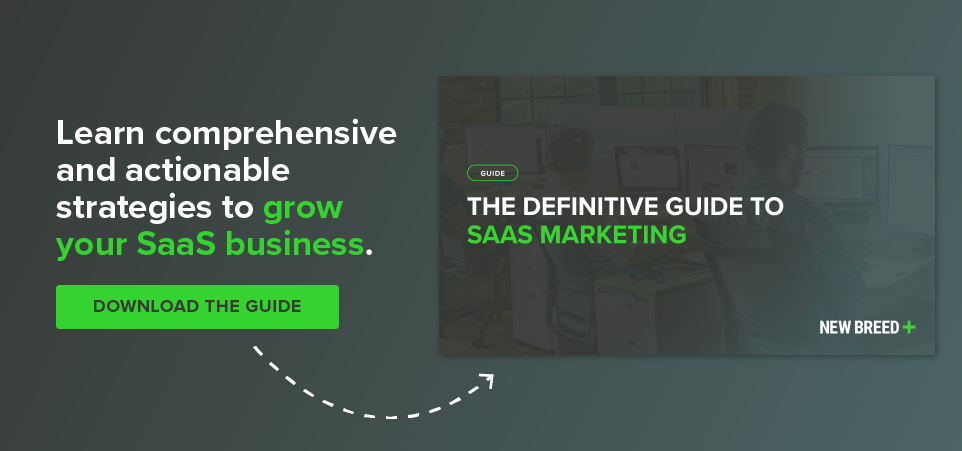
If someone is looking for a personal finance app to help with their budgeting as they balance necessities like rent and utilities with the expenses associated with their hobbies, they’ll do some research about the different options available and then purchase an app to use themselves.
In this case, the same person is both the end buyer and the end user.
However, if an operations manager is searching for a budgeting software for the finance department to use to manage company-wide budgets, they’re purchasing software they aren’t going to be the end user for.
In that example, the buyer and user are not the same people, so the personas marketers and sales reps use to guide their communications should reflect those differences.
What is a User Persona?
A user persona is a semi-fictional representation of someone using your product or service. Easy. Done. End of post. That’s what you’re looking for, right?
Probably not.
If only it were that simple. While the definition of a user persona is short and sweet, there’s a lot more to it than that. There are key differences to think through between your user and buyer personas and plenty of reasons to care about both. On top of that, building a user persona that you can actually use to benefit your business poses some challenges that we’re here to help out with.
What Is the Difference Between a Buyer Persona And a User Persona?
At the end of the day, user personas shouldn’t be drastically different from buyer personas, but they can be different people.
When creating your buyer personas, you gather information about their daily working life: what their challenges are, what motivates them, what their demographic profile looks like, the firmographics of where they work, their job title, responsibilities and their buying authority.
A buyer persona might be a champion, where they’re the one pushing through the decision-making process, but the financial authority lies elsewhere, or they could be the decision-maker.
What kind of authority an individual has is the key differentiator between buyer and user personas. Your user persona might not have any authority or influence in the purchasing process, but your buyer persona always will.
If your user persona doesn’t have any purchasing authority, then your buyer personas and user personas are different people.
If you have both a user persona and a buyer persona, the purchasing authority for your user persona will not be as relevant. Your user persona will be the one using the platform, not the person buying the platform.
Why Should You Care About User Personas?
Understanding your user personas can still help you with building a business case to present to your buyer persona. If you’re talking to a buyer, you can say “this is the team you’re managing who will be using the product. Here are the ways we’re going to make their lives easier and more efficient, and here’s how you’re going to get more productivity and higher performance out of them.”
With an app from a B2C company, their user and buyer personas are probably the same person. With B2B, that will may not be the case. More often than not in B2B, a manager is making purchase decisions for their team.
For example, when New Breed was purchasing Drift, a conversational marketing tool, their champion was our Head of Demand Generation. But our CFO and CEO had the purchasing power and decision-making authority, and our sales and marketing team would be the end users of the tool.
The sales reps and marketers who are actually using the product since we’ve purchased Drift weren’t the ones going through the evaluation process for that product.
Messaging targeted at your user personas focuses on the benefits the end users will receive. You’ll be thinking through the same questions you ask when determining how your product addresses your buyer persona’s pain points, but looking at the answers through a different lens.
Take a marketing automation platform like HubSpot, for example. If your marketing director is your buyer persona, they’re probably going to evaluate a tool based on its ability to deliver leads and provide a positive ROI.
Your user persona would be the actual marketing team. They want a marketing automation tool that’s easy to use and can run all the campaigns and marketing efforts they need to do.
The end user of a marketing automation tool is more concerned with how easy it is to use, how quickly it can get their tasks done, how much efficiency it can add into their day, rather than increased leads or ROI.
For a project management tool, the buyer will want the tool to integrate with the other software they use, streamline communication and collaboration, consolidate their platform stack and reduce costs.
The end user wants the capability to store and manage detailed information about each project, track the estimated hours of each project to enable capacity planning, gain visibility into upcoming tasks and track and log time directly into the platform.
Management probably isn’t as concerned with the minute details as the end user would be. That being said, they might consult with end users to get feedback about the features they need during their evaluation process
Marketers and sales reps of a product need to be able to speak to both perspectives and answers any questions that come up during the sales process.
How Do You Build a User Persona?
The information you need to collect about your users is very similar to the information you collect to create your buyer personas, but the best methods for gathering that information differs.
A survey sent to the people who purchase your product about their decision-making process will help you build your buyer personas. On the other hand, in-product messaging will provide you with more insight about your users and what their habits are like. Marketing and sales will have an understanding of your buyers, but your support and customer success team will have more dealings with the end user.
You can also learn about your users during the onboarding process.
The primary users you’ll have are admins and end-users. An end-user is someone who operates the tool to do their job, while an admin acts as more of a manager of the tool.
The admin won’t necessarily be using the product, but they’ll work in the tool. They’ll be ensuring it’s configured correctly and adopted within the team. The admin helps set up the product and is responsible for overseeing permissions and operational aspects of the product.
The admin helps enable the end-users and acts as a sort of on-site support specialist. They need to be an expert on the product’s capabilities, setup and functionality.
For some products and software,you’ll also have secondary and tertiary users who are on the receiving end of the tool. For example:
- Drift’s customers use their conversational marketing platform to engage with their prospects. So when New Breed uses Drift to engage with our prospects, those prospects become tertiary users of Drift as well.
- New Breed uses a project management tool called Mavenlink to communicate with our clients. So our clients become secondary users of Mavenlink even though they haven’t purchased the tool.
Companies like Drift and Mavenlink that have these secondary and tertiary users are perfectly situated to leverage product-led growth. Product-led growth is a go-to-market strategy that allows a product to sell itself by providing value to its users at a rapid pace. Secondary and tertiary users are a form of virality that enables the value of that product to spread beyond your existing customer base without additional investment in marketing or sales.
The Takeaway
User personas and buyer personas cover similar information but can be different people, especially in B2B. Understanding your user personas helps you market and sell your product, but moreover can also help you improve your product so it can sell itself.
To effectively use product-led growth tactics, you need to have an understanding of your product’s different end-users, and user personas are also essential for effectively upselling freemium products, where in-product actions are what converts users to buyers.
Guido Bartolacci
Guido is Head of Product and Growth Strategy for New Breed. He specializes in running in-depth demand generation programs internally while assisting account managers in running them for our clients.





